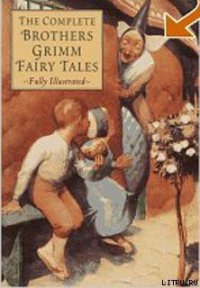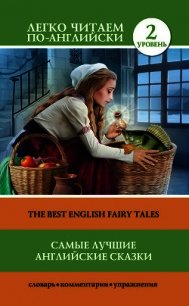Celtic Fairy Tales - Jacobs Joseph (лучшие книги читать онлайн txt) 📗
X. MUNACHAR AND MANACHAR.
Source.–I have combined the Irish version given by Dr. Hyde in his Leabhar Sgeul., and translated by him for Mr. Yeats’ Irish Folk and Fairy Tales, and the Scotch version given in Gaelic and English by Campbell, No. viii.
Parallels.–Two English versions are given in my Eng. Fairy Tales, No. iv., “The Old Woman and her Pig,” and xxxiv., "The Cat and the Mouse,” where see notes for other variants in these isles. M. Cosquin, in his notes to No. xxxiv., of his Contes de Lorraine, t. ii. pp. 35-41, has drawn attention to an astonishing number of parallels scattered through all Europe and the East (cf., too, Crane, Ital. Pop. Tales, notes, 372-5). One of the earliest allusions to the jingle is in Don Quixote, pt. 1, c. xvi.: “Y asi como suele decirse el gato al rato, et rato a la cuerda, la cuerda al palo, daba el arriero a Sancho, Sancho a la moza, la moza a el, el ventero a la moza.” As I have pointed out, it is used to this day by Bengali women at the end of each folk-tale they recite (L. B. Day, Folk-Tales of Bengal, Pref.).
Remarks.–Two ingenious suggestions have been made as to the origin of this curious jingle, both connecting it with religious ceremonies: (1) Something very similar occurs in Chaldaic at the end of the Jewish Hagada, or domestic ritual for the Passover night. It has, however, been shown that this does not occur in early MSS. or editions, and was only added at the end to amuse the children after the service, and was therefore only a translation or adaptation of a current German form of the jingle; (2) M. Basset, in the Revue des Traditions populaires, 1890, t. v. p. 549, has suggested that it is a survival of the old Greek custom at the sacrifice of the Bouphonia for the priest to contend that he had not slain the sacred beast, the axe declares that the handle did it, the handle transfers the guilt further, and so on. This is ingenious, but fails to give any reasonable account of the diffusion of the jingle in countries which have had no historic connection with classical Greece.
XI. GOLD TREE AND SILVER TREE.
Source.–Celtic Magazine, xiii. 213-8, Gaelic and English from Mr. Kenneth Macleod.
Parallels.–Mr. Macleod heard another version in which “Gold Tree” (anonymous in this variant) is bewitched to kill her father’s horse, dog, and cock. Abroad it is the Grimm’s Schneewittchen (No. 53), for the Continental variants of which see Kohler on Gonzenbach, Sicil. Mahrchen, Nos. 2-4, Grimm’s notes on 53, and Crane, Ital. Pop. Tales, 331. No other version is known in the British Isles.
Remarks.–It is unlikely, I should say impossible, that this tale, with the incident of the dormant heroine, should have arisen independently in the Highlands; it is most likely an importation from abroad. Yet in it occurs a most “primitive” incident, the bigamous household of the hero; this is glossed over in Mr. Macleod’s other variant. On the “survival" method of investigation this would possibly be used as evidence for polygamy in the Highlands. Yet if, as is probable, the story came from abroad, this trait may have come with it, and only implies polygamy in the original home of the tale.
XII. KING O’TOOLE AND HIS GOOSE.
Source.–S. Lover’s Stories and Legends of the Irish Peasantry.
Remarks.–This is really a moral apologue on the benefits of keeping your word. Yet it is told with such humour and vigour, that the moral glides insensibly into the heart.
XIII. THE WOOING OF OLWEN.
Source.–The Mabinogi of Kulhwych and Olwen from the translation of Lady Guest, abridged.
Parallels.–Prof. Rhys, Hibbert Lectures, p. 486, considers that our tale is paralleled by Cuchulain’s “Wooing of Emer,” a translation of which by Prof. K. Meyer appeared in the Archaeological Review, vol. i. I fail to see much analogy. On the other hand in his Arthurian Legend, p. 41, he rightly compares the tasks set by Yspythadon to those set to Jason. They are indeed of the familiar type of the Bride Wager (on which see Grimm-Hunt, i. 399). The incident of the three animals, old, older, and oldest, has a remarkable resemblance to the Tettira Jataka (ed. Fausboll, No. 37, transl. Rhys Davids, i. p. 310 seq.) in which the partridge, monkey, and elephant dispute as to their relative age, and the partridge turns out to have voided the seed of the Banyan-tree under which they were sheltered, whereas the elephant only knew it when a mere bush, and the monkey had nibbled the topmost shoots. This apologue got to England at the end of the twelfth century as the sixty-ninth fable, “Wolf, Fox, and Dove,” of a rhymed prose collection of “Fox Fables” (Mishle Shu’alim), of an Oxford Jew, Berachyah Nakdan, known in the Records as "Benedict le Puncteur” (see my Fables Of Aesop, i. p. 170). Similar incidents occur in “Jack and his Snuff-box” in my English Fairy Tales, and in Dr. Hyde’s “Well of D’Yerree-in-Dowan.” The skilled companions of Kulhwych are common in European folk-tales (Cf. Cosquin, i. 123-5), and especially among the Celts (see Mr. Nutt’s note in MacInnes’ Tales, 445-8), among whom they occur very early, but not so early as Lynceus and the other skilled comrades of the Argonauts.
Remarks.–The hunting of the boar Trwyth can be traced back in Welsh tradition at least as early as the ninth century. For it is referred to in the following passage of Nennius’ Historia Britonum ed. Stevenson, p: 60, “Est aliud miraculum in regione quae dicitur Buelt [Builth, co. Brecon] Est ibi cumulus lapidum et unus lapis super-positus super congestum cum vestigia canis in eo. Quando venatus est porcum Troynt [var. lec. Troit] impressit Cabal, qui erat canis Arthuri militis, vestigium in lapide et Arthur postea congregavit congestum lapidum sub lapide in quo erat vestigium canis sui et vocatur Carn Cabal.” Curiously enough there is still a mountain called Carn Cabal in the district of Builth, south of Rhayader Gwy in Breconshire. Still more curiously a friend of Lady Guest’s found on this a cairn with a stone two feet long by one foot wide in which there was an indentation 4 in. x 3 in. x 2 in. which could easily have been mistaken for a paw-print of a dog, as maybe seen from the engraving given of it (Mabinogion, ed. 1874, p. 269).
The stone and the legend are thus at least one thousand years old. "There stands the stone to tell if I lie.” According to Prof. Rhys (Hibbert Lect. 486-97) the whole story is a mythological one, Kulhwych’s mother being the dawn, the clover blossoms that grow under Olwen’s feet being comparable to the roses that sprung up where Aphrodite had trod, and Yspyddadon being the incarnation of the sacred hawthorn. Mabon, again (i.e. pp. 21, 28-9), is the Apollo Maponus discovered in Latin inscriptions at Ainstable in Cumberland and elsewhere (Hubner, Corp. Insc. Lat. Brit. Nos. 218, 332, 1345). Granting all this, there is nothing to show any mythological significance in the tale, though there may have been in the names of the dramatis personae. I observe from the proceedings of the recent Eisteddfod that the bardic name of Mr. W. Abraham, M.P., is ’Mabon.’ It scarcely follows that Mr. Abraham is in receipt of divine honours nowadays.


